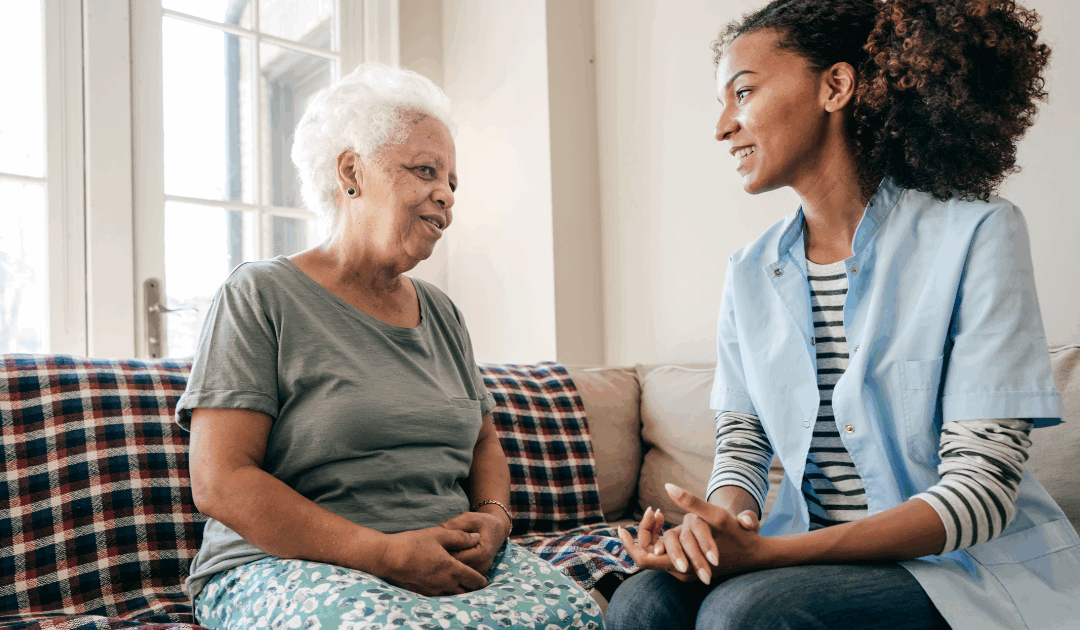Sacramento stands out as one of the most culturally diverse and inclusive cities in the United States, reflecting a rich blend of ethnicities, languages, and traditions. According to recent demographic data, approximately 30% of city residents identify as Hispanic or Latino, 19% as Asian, 13% as Black or African American, and the balance as white or multiracial groups . More than 21% of the population were born outside the U.S., contributing to Sacramento’s international flavor that surpasses national averages.
How Culture Shapes End of Life Care
Sacramento’s diversity deeply influences how hospice care should be delivered, requiring a compassionate and culturally responsive approach. Sometimes, there is a perception that hospice care signifies “giving up” or that it means enduring prolonged suffering at the end of life. This hesitation can be especially pronounced among patients from minority backgrounds, who may already have complex and sometimes distrustful relationships with the medical system due to historical and systemic disparities.
With communities representing a wide range of ethnic, linguistic, and spiritual backgrounds, hospice providers must be attuned to the unique beliefs, values, and traditions that shape each family’s experience of illness, death, and grieving. This includes understanding preferences around pain management, family roles in caregiving, spiritual practices, language needs, and rituals surrounding death and burial. Culturally sensitive hospice care respects and honors these differences, fostering trust and providing care that aligns with each patient’s worldview.
In a city like Sacramento, where diversity is woven into daily life, integrating cultural awareness into hospice care is essential to ensuring dignity, comfort, and meaningful support for all families at the end of life.

Addressing Concerns with Education and Empathy
One of the most effective ways to reduce anxiety and resistance is through thoughtful education. Families need clear, compassionate information about what hospice truly offers—patient-centered care focused on enhancing quality of life rather than simply managing end-of-life moments. However, initiating this conversation requires more than just information; it requires cultural awareness and sensitivity.
Including Trusted Community Voices
Different cultures have established hierarchies and respected figures that guide major life decisions. To support informed choices, it’s important to involve these trusted individuals in the hospice discussion. Begin by asking:
➡️ “Who do you trust the most when making important decisions?”
➡️ “Who do you turn to for advice during challenging times?”
With the family’s consent, consider including cultural leaders, faith leaders, community elders, or other respected figures in the dialogue. This inclusive approach fosters understanding and ensures that decisions are made with cultural integrity.
By incorporating trusted voices and prioritizing open, respectful communication, choosing hospice care can become a thoughtful decision focused on comfort and peace rather than fear and uncertainty.
Culturally Sensitive Conversations About Death
Different cultures hold diverse perspectives on death—not just regarding beliefs about the afterlife but also in how death itself is discussed. In some communities, even mentioning death can feel taboo, as it is thought to hasten the process or bring bad luck. In other cultures, death is viewed as a divine occurrence that should not be influenced by medical intervention.
Respecting Beliefs with a Patient-Centered Approach
Hospice professionals can honor these beliefs by steering conversations away from the concept of death itself and focusing instead on the patient’s values and comfort. Rather than direct questions about end-of-life preferences, consider asking:
-
“What does living well look like for you as time becomes more limited?”
-
“Who would you like to have with you as you continue your journey?”
-
“How can we help you feel most at peace and supported?
By framing discussions around quality of life and personal wishes, hospice teams can respect cultural and spiritual beliefs while still providing essential care.

Understanding Cultural Perspectives on Pain
Cultural differences also influence how individuals perceive and express pain. In some cultures, displaying pain may be seen as a sign of weakness, prompting patients to underreport their discomfort. For others, pain might hold spiritual significance, with some patients choosing to endure discomfort as a way of demonstrating faith or resilience.
Crafting a Culturally Aligned Pain Management Plan
To create a respectful pain management plan, hospice caregivers must engage in open conversations about the patient’s beliefs and preferences. Acknowledging that some individuals may want to maintain a certain level of pain for spiritual reasons, caregivers can discuss pain relief options that balance comfort with the patient’s values. This may include offering milder forms of pain management or alternative therapies that align with the patient’s cultural and spiritual framework.
Building Trust Through Cultural Competency
At Sanctuary, we recognize that providing quality hospice care means honoring the whole person, including their cultural identity. Our team members undergo cultural competency training to understand how different communities view medical care, death, and the dying process. This knowledge allows us to approach sensitive conversations with empathy, respect, and a genuine commitment to supporting both patients and their families.
Fostering Open Dialogue and Compassionate Care
Discussing hospice care is never easy, but with a thoughtful, culturally informed approach, these conversations can become pathways to understanding, peace, and comfort. By educating families, involving trusted community figures, and prioritizing cultural sensitivity, hospice care decisions become opportunities to honor each person’s unique journey while providing the compassionate support they deserve.

